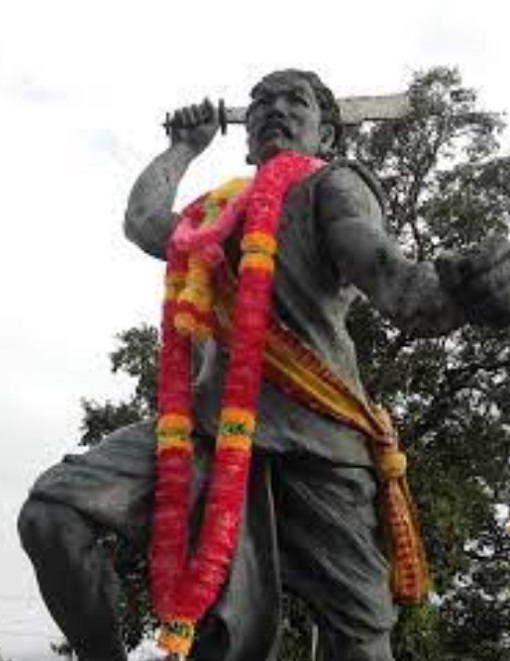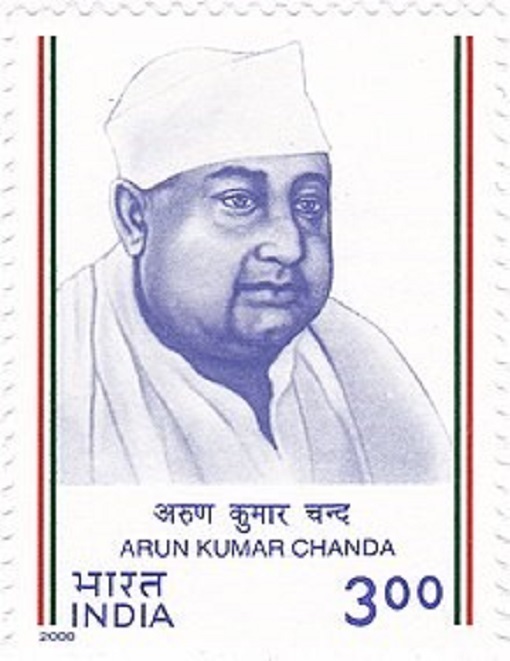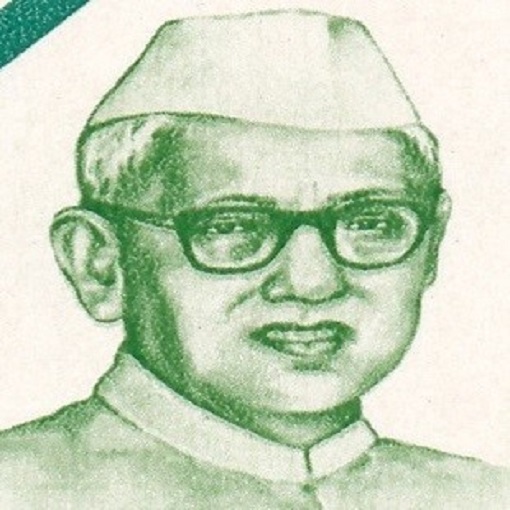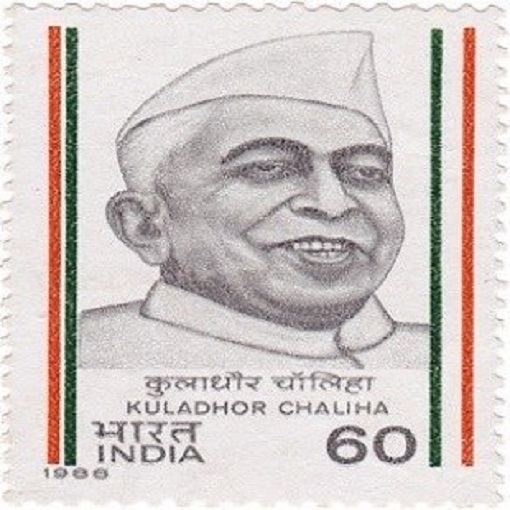
Dimasa hero Sambodhan Funglo, North Cachar hills

Arun Kumar Chanda

Bishnu Ram Medhi

Kuldhar Chaliha
Barak valley has a glorious legacy of the freedom movement which began in the early part of the 20th century, although the anti-British movement may be traced to the later part of the 19th century. The clarion call of Vande Mataram, the legend of great martyrdom of Khudiram Bose(1908) reached the valley through the songs sung by folk singerd; the Bengal rebels had used Cachar as a secured shelter; the national figures from the place Bipin Chandra Pal, KK Chanda made Cachar the epicenter in the annals of anti-British activities. The following brief sketch is a compilation.
When Sona Mian Choudhury, a Jaminder of Satkarakandi in Sonai opposed the British annexation of Cachar in 1832, he did not know that he was becoming a part of the movement which was to develop within a century of the British Raj leading to the country's freedom in 1947. Of course, Sona Mian was persecuted and held up in British jail and his rebellion stopped altogether. Lord William Bentinck was the Governor-General of India at that time.
Again, in the heyday of the colonial expansion, there broke Great Mutiny, named Sepoy Mutiny, and its arena was extended to Cachar in 1857-58 with violent operations in several places involving death in encounters, and execution of the rebels by the British authority. The next anti-British movement was led by the Dimasa hero Sambodhan Funglo in the North Cachar Hills (which was within the jurisdiction of Cachar) who had offered the Deputy Commissioner Colonial Boyd a mortal blow leading to his death in Silchar.
Coming over to the 20th century, the first political organization formed in Cachar was Cachar Swadeshi Sabha and Surid Samiti to support the anti-partition movement in 1905. The visit of Bipin Chandra Paul to Silchar in 1906 raised the feeling of patriotism in the mind of the people of the district.
The second session of the Surma Valley Political Conference was organized in 1908 at Karimganj, and the Cachar District Congress Committee was formed in 1920 with Kamini Kumar Chanda as the president. Meantime, the Khilafat Committee was formed in Sylhet and a joint meeting with the Surma Valley Political Conference was held on 19, 20 September 1920, presided over by Maulavi Mohammed Abdul Karim of Sylhet. The session unanimously resolved to launch a full non-cooperation movement against the British rulers.
Boycotting of foreign goods, picketing before liquor shops, installation of charka, use of khadi clothes, the establishment of swadeshi shops, even Swadeshi Bazar (in Bagbari, Karimganj), and relinquishing of government title were taken recourse to. Again, the Surma Valley Provincial Khilafat Conference was held in Jugidahar of Maulavibazar on 7th March 1921 and it was presided over by CR Das. Decisions were taken to organize a movement against the British rule in villages and create a strong volunteer force.
A host leader of the Khilafat Movement in Karimganj emerged. A similar Khilafat Committee has formed in Silchar also and it was led by Maulana Peer Mohammed Yakub and Khan Bahadur Rashid Ali. Khilafat and Congress workers formed a strong force of 90,000 volunteers.
Mohammed Gulzar Ali Mazumdar was the Secretary of this volunteer force. Hurmat Ali Barlaskar from Buribail was another important name of the time. Then came forward the Ulama Conference, Jamiat Ulama- Hind to join the movement. One of the elected members was Abdul Matlib Mazumdar from Hailakandi opposing the partition of India on communal lines came forward. The call of the Khilafat movement reached Cachar in 1921 with Mahatma Gandhi visiting Silchar along with the Saukat brothers. Cachar District Congress under the leadership of the President, Shyamacharan Deb, organized non-cooperation and khilafat meetings in the various places of the district. The message of Swadeshi and non-cooperation and khilafat reached every nook and corner of Cachar and hundreds of people joined the anti-British movement courting arrest in Silchar, Barkhola, Katigorah, Udarbond, Lakhipur, Bihara, and many places in Karimganj and Hailakandi subdivision. Punitive taxes were collected from numerous villages.
As recorded in the Deputy Inspector's (Cachar) report dated 20th June, and 30th July 1921, "On the 4th April 1921 there was a Khilapat meeting on the open field (in Barkhola) which was attended by Mr.KK Chanda and others from Silchar. The withdrawal of pupils from school was insisted on by the leading non-cooperators of Silchar."
The same note has it that "12 pupils (of Raja GC School, Barkhola) walked out of the classes with books" on 6th April, following the call by KK Chanda supported by the three members of the school committee, Jatindra Mohan Deblaskar, Munshi Wazid Ali and Tara Charan Chakrabarty, who were forced to resign their membership. The incident marked a new phase in the history of the freedom movement in the context of rural Cachar. The following months were indeed most eventful in Cachar with Sanat Kumar Das in the Udharband area, Jatindra Mohan Deblaskar in the Barkhola, and Satindra Mohan Dev in Silchar organizing anti- British activities. The government, however, did not wait to arrest and send them to Silchar jail. Of course, at the same time (1921-22) the stalwarts of the freedom movements from Brahmaputra valley were also brought as prisoners. They were Kuladhar Chaliha, Bishnuram Medhi, and Tarunram Phukan who formed an intimacy with the trio of the period Sati- Jati-Sanat along with another leader from Lakhipur, Ganga Dayal Dixit.
Subhash Chandra Bose visited Cachar in 1935 which left a tremendous impact on the mass. The visit of Bipin Chandra Paul and Sundarimohan Das in 1928 triggered the anti- Simon Commission agitation in the valley. The pledge of Independence was read out in the meetings in various places on 26th January 1936. By the forties of the 20th century, the youths were enthused by the idea of communism and Surma valley Cultural Squad activities influenced the cultural life in the valley. The Manipuri and Dimasas, and also the tea laborers came under the fold of new brigands. Bir Tikendrajit had a number of followers in the valley that joined the anti-British movement along with the Bengalis. Trade union activities extended to the tea estates particularly in the Chorgola valley in Karimganj which resulted in a great 'Chorgola exodus' in the history of the freedom movement in the region.
The Quit India movement gained momentum with Jamat-ulema-e-Hind and Congress joined hands together. The period preceding the independence and the fateful partition was very important, as the leading organizations, as well as the common public, never approved of the partition, and when the partition became inevitable, attempts were made to retain the entire Surma valley division which included the district of Sylhet (including Karimganj sub-division), and Cachar (including Hailakandi sub-division) within Assam, even though some influential corners were out to get rid of Sylhet, notwithstanding the strong pressure of the Muslim league to incorporate the entire Surma Valley within Pakistan.
The Cachar Kalyan Samiti under the leadership of Hem Chandra Chakrabarty, Nibaran Chandra Laskar, Bidyapati Singh, Maulavi Abdul Wahab Choudhury, and Nanda Kishore Singh resolved to 'face any challenge in the shape of the referendum 'for maintaining the integrity of the country. The Nikhil Cachar Haidamba Barman Samiti in a convention held at Barkhola on 21st July 1947, under the Presidentship of Manindra Chandra Barman Rajkoar, with Digambar Barman as the Secretary sent a memorandum to Acharya Kripalani, the Congress president, for retention of Cachar within Assam. Memorandum was sent on behalf of the Barujibi Sammelani of Katakhal (dated 23 July 1947; on behalf of the people of Sonai on 22nd July a telegram was sent to Acharya Kripalani; the Cachar District Depressed Class Association had also drawn the attention of the congress leadership towards the conspiracy of transferring Cachar to Pakistan (the matter has been recounted by Vivekananda Mahanta in 'Sylhet Referendum.' souvenir Barak Upatyaka Banga Sahitya O Sanskriti Sammelan, Karimganj, 2017). The collective effort of the Hindus and Muslims to avert the partition needs to be recorded while recounting the last phase of the freedom movement in Cachar.
A Convention of the Nationalist Muslims was held in Silchar on 20th February 1947, at the behest of Khan Saheb Rashid Ali Laskar who unequivocally opposed the demand for Pakistan. But the partition could not be averted, and only three and a half thana of Karimganj, Badarpur, Ratabari and Patharkandi remained in India by the Radcliffe award. People from the counterpart of Cachar, the Sylhet district were displaced and sought shelter in the territory of their motherland which fortunately was retained within India. They include both Hindus as well as the nationalist Muslims, who never subscribed to the partition on religious grounds, and have still been suffering atrocities and dejection notwithstanding the sacrifice and commitment of their forefathers for the freedom of their motherland.
Source: Abhinav Singh, IAS 2020 (Assam)